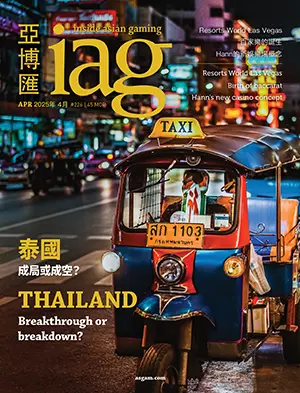Embracing the PESO media model
Never before has there been so much marketing media yet so few people wanting to hear the messages. Under such circumstances, now is probably a good time to rethink our media efforts. By Julia Carcamo
For years, many in business thought of media in two forms: paid advertising and free PR. Paid was, of course, the media we purchased as advertisers on TV, radio, newspapers, magazines and billboards. So-called free PR was the stories that appeared in the news, good or bad.
Today’s modern marketer understands that we now have to look at media in four categories – paid, earned (or what used to be called“free”), shared and owned; PESO for short. It was much simpler a decade ago, when most marketers only concerned themselves with paid and earned media, even though the other forms described above existed. Sure, everyone had websites, but few really thought of those as media. The changes to how we traverse the internet have forced all of us to look at and consider shared and owned media with the same careful eye.
Before will delve into the PESO model a little deeper, let’s make sure we’re on the same page with our definitions:
Paid is what we’ve always thought of as advertising – messages delivered on our behalf by a third party in exchange for payment. Typically, we work with an agency to develop the optimal media buy to reach as many people as often as possible for as little money as possible. Then, our agency partners develop the perfect message that resonates with our target audience. It has been traditionally thought of as “expensive” rather than as an investment. The data we’ve traditionally worked with was in terms of gross rating points (GRPs), reach and frequency. Today, we’ve learned how to use the information in our databases to make those buys even more efficient. Over the years we’ve also learned how to use the mediums properly and most effectively – outdoor for reminders and directions, television for brand building, print for information. And, most recently, paid media has also come to include social media in the forms of advertising and sponsored content.
Earned is what many used to refer to as “free media” or “PR.” First of all, you have to admit it was never free. You had to pay for a public relations professional or agency to manage efforts and develop relationships with the media to get your message placed. In addition, the term “public relations” has really evolved to something more akin to “media relations.” Public relations professionals also dealt with other companies and the community. Their efforts were more about developing customer and business relationships.
Today’s professional is targeting media, bloggers and such to tell the company’s story. The good news is that stories told by a reputable third party always had more perceived credibility than advertising. The bad news is that this was never free. It takes time and effort, and even with the best effort, there is never a guarantee that your story will show up exactly as you envisioned.
Shared is not the new free. Interestingly enough, when social media gained a strong foothold, many referred to it as free. Lo and behold, now we realize it wasn’t so free – like public and media relations, it took the investment of time and effort. And whether you handled social in-house or through an agency, we all learned that the best efforts resulted from situations where we dedicated resources to creating content that targets would want to share with their networks.
Again, our stories told through third parties had a greater perceived credibility. Who among us doesn’t ask friends and family to share their experiences as references for a decision we’re trying to make? And, along the way, we learned which outlets worked best for our businesses (LinkedIn for B2B; Facebook for consumer-facing messages and so on).
Finally, there is Owned media – your website, your content and for B2B businesses, things like the webinars you produce and the presentations you give. This is media you control – in tone, in message and in frequency. However, it is also media that takes more and more attention and management. We can no longer whip together a website and check it off the list. Google’s ever-evolving algorithms and consumer willingness to research requires us to constantly tend to our owned media garden. We have to feed it new content and weed it of old plus update coding and information to ensure there is a constant flow of traffic through our media.
IT’S ALL MEASUREABLE
Has there ever been an industry that loves to measure things as much as the casino industry? One of the reasons media efforts seem to keep their position as the first item cut from the budget is because we really haven’t been able to grasp measurement and its relationship to the revenue line. Sure we could talk about GRPs, reach and frequency for advertising and ad equivalencies for media relations, but we haven’t consistently connected the dots to actual business growth.
The idea of measuring advertising equivalencies and keeping clipping books is as outdated as the landline phone. We need to look at this form of media in terms of a sales funnel. Envision your sales funnel as audiences on top, leads in the middle and customers at the bottom. As casino operators, we deal with the sales funnel all the time. Think about your foot traffic on a Saturday; you know that a good Saturday night means that you’ll have approximately X number of people come through your door to get you to a targeted revenue amount. If you fall short of that foot traffic number, your gut will tell you that you may fall short of revenue even before you look at your flash report. Conversely, if you go over that foot traffic number, you start counting the seconds before you can get your hands on that flash report because you just know it’s going to be great. In this scenario, foot traffic is the middle of the funnel – your leads and everyone who comes through the door who may or may not spend money.
Marketing’s job is to develop a large enough audience (top of the funnel) to generate enough leads (middle or people coming in the door) so that operations can convert some or all into customers. If you’re measuring your marketing efforts purely in terms of revenue, you’re measuring it all wrong. You’re measuring the effort at the bottom of the funnel (the operations side) rather than at the top (which is where marketing builds the audience). So the question becomes how do you measure your efforts at the top of the funnel?

ROI is a simple formula – net profit divided by total investment. Now, let’s think about a very simplified situation.
Say you want to make $100 profit from each customer. Your analyst has reviewed headcounts, revenue, actual profit and much more. She tells you that for every 10 people that come into the casino, you make an average of $100 profit. Now you know you need 10 people to walk in the door in order to make $100. That means that each person that walks in the door is worth $10.
Next, you know based on past marketing efforts that you need to talk to 10 people for one of them to walk in your door. Now, you realize you need 100 people in your audience (10 will walk in to give you that $100 total profit). You can now infer that each audience member is worth $1, and you have a point of reference to understand what you could spend to build the audience you need to generate the revenue you want, based on your reinvestment and marketing strategy. If you spend $100 for a total audience of 100 which nets you $100 profit … well, you may want to rethink that, but if you spend $50, you may have an acceptable ROI.
From here, it’s easier to manage your ad budgets and reviewing web analytics suddenly has more of a story for you than just traffic. How many new visitors are you getting to your website (building your audience)? Are you tracking earned media placements in relation to traffic to your site in addition to the traffic you’re driving through e-mails, social and paid online media? Are you using unique URLs for your media efforts?
LINKING EFFORTS TO THE BUSINESS
There are a number of things you can measure in each PESO media category. However, it’s important to understand which ones are actually linked to your business:
Paid – Depending on the tactics you use, you could look at social media ads and sponsored content and the ability to create traffic to your website. If you’re providing B2B downloadable content, how many pieces of content are being downloaded? How many people are opting into your newsletter? Are you getting new fans or followers from your sponsored posts or social media ads?
Earned – How much web traffic is coming from a story? Are they converting to leads by opting in to your e-mail database? Are these stories growing your audience (new visits to your website)?
I recently spoke to a PR manager who was extremely proud of“getting” stories in the local papers, but I was stunned to find out he didn’t know if those stories really created any sort of impact. He didn’t realize that a free and simple tool like Google Analytics could help him tell a better story about his efforts.
Shared – While I don’t believe in looking at fans and followers as your only KPI, I do agree you have to maintain (or grow) a certain level in order to build your audience. So, do keep track of those levels, but think of creating a score sheet for your efforts (the score being driven by the value to creating a lead). How many points is a like worth? A retweet? A share? A comment? Use unique URLs and phone numbers in your efforts. You’ll get specific information to evaluate each effort.
Owned – Again, you don’t have to invest in an expensive tool. Google Analytics will show you how many visitors you have in any period of time (new, unique and return). You’ll also understand how much time each person is spending on the site (and the difference if they’re new or returning). You’ll also understand what parts of your content they’re interested in and perhaps sharing with their networks.
Once you start measuring, you can start to understand what is and what isn’t driving business; allowing you to concentrate more on the drivers and less on the efforts that aren’t making a bottom line impact.
It’s time to think of media efforts as business drivers and not just brand enhancers.
Reprinted with permission of Casino Journal




























